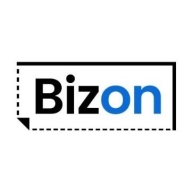

OpenText Documentum Content Management and BizOn CMS compete in the content management category. BizOn CMS is perceived to have the upper hand due to superior ease of deployment and a better price-to-value ratio based on data comparisons.
Features: OpenText Documentum is recognized for robust compliance features, advanced document control, and extensive integration capabilities; these are vital for industries requiring strict regulatory compliance. BizOn CMS highlights a more intuitive design, emphasis on flexibility, and ease of content creation, appealing to companies seeking an agile and user-friendly experience.
Ease of Deployment and Customer Service: BizOn CMS has a streamlined deployment process and strong support, making it adaptable to business needs. Documentum might require intricate setup due to its comprehensive features but benefits from a solid support structure.
Pricing and ROI: OpenText Documentum generally involves a higher initial setup cost, promising substantial ROI for enterprises that need its extensive features. BizOn CMS is noted for competitive pricing and faster ROI due to lower upfront costs and efficient scalability.

BizOn CMS is a comprehensive content management system designed for robust digital experience management, ideal for businesses seeking scalable and user-friendly solutions.
BizOn CMS offers efficient tools for managing digital content, ensuring seamless integration with existing infrastructure, and supporting diverse business needs. It provides intuitive customization options and enhanced security measures to protect data integrity. While it delivers exceptional functionality, there is room for improvement in areas such as performance optimization under heavy load and simplifying the administrative panel for quicker onboarding.
What are the key features of BizOn CMS?BizOn CMS implementation extends across industries such as retail, healthcare, and finance, offering tailored solutions that optimize content distribution and enhance user engagement. Its adaptability allows it to meet specific industry demands, leading to improved operational outcomes and customer satisfaction.
OpenText Documentum Content Management provides centralized document management with strong security, advanced metadata management, and seamless integration with systems like SAP and Salesforce, aiding businesses in overseeing content effectively.
OpenText Documentum Content Management is known for its strong integration capabilities, especially with systems such as SAP, Salesforce, and Oracle E-Business Suite, facilitating effective document management. Its strengths include advanced security features, comprehensive metadata management, and robust support for lifecycle and workflow management. The platform's scalability and business process automation capabilities support industries with large volumes of content. It is adaptable for various sectors, including healthcare, banking, insurance, and government, providing document storage, sharing, and collaboration functionalities. While the intuitive automation engine enhances workflows, users have noted that improvements are needed in UI design, performance, and integration with additional systems. Concerns about cloud transition security, high costs, outdated workflows, and complex metadata management indicate areas for development. Supports are sought for AI integrations, improved cloud functionality, and efficient documentation.
What are the key features of OpenText Documentum Content Management?Industries such as healthcare, banking, and government use OpenText Documentum Content Management for document-centric processes, ensuring regulatory compliance and facilitating collaboration. With Captiva enhancing OCR and batch scanning, it is crucial for managing high-quality documentation and compliance efforts across sectors.
We monitor all Enterprise Content Management reviews to prevent fraudulent reviews and keep review quality high. We do not post reviews by company employees or direct competitors. We validate each review for authenticity via cross-reference with LinkedIn, and personal follow-up with the reviewer when necessary.